European soil threatened
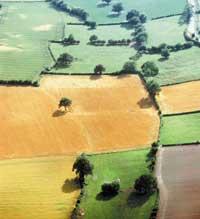
Soil is the top layer of the earth's crust, composed of minerals, organic matter, water, air and living things. In addition to the things that appear in the definition, soil is a vital resource for the human being: from it takes food, on it builds homes and industries, from where it extracts a lot of raw materials... This is undoubtedly a resource that has always been exploited, but a report by the European Union warns that the soil situation has worsened in recent times.
In Europe, more than 320 types of soil have been identified with very different physical and chemical characteristics. But despite its richness and diversity, it is not easy to innovate: it degrades very quickly and takes a lot to form and renew. In recent years, due to human activities, the soil has been severely damaged; in the European Union, 16% of the land surface is being attacked and its consequences are devastating. For example, in the Iberian peninsula, in central and southern Italy, in southern France and in Greece many soils are becoming deserts.

Aware of this problem, the European Commission published a report last year. It identifies threats to soil and promotes sustainable use. To ensure that future generations collect this heritage in the best possible state, the report also captures future policy lines.
Erosion, organic matter and pollutants
The main threat of soil is erosion. It is actually a natural phenomenon in which wind and water liberate and accumulate soil particles. The Mediterranean area is the most eroded area and in it the problem has long been known: the first references to erosion are prior to 3,000 years ago. However, the problem is not confined to the Mediterranean and erosion is increasingly pronounced in Austria, the Czech Republic, northern France and Belgium.
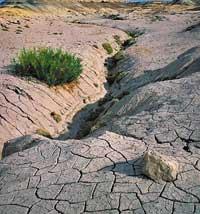
Various factors influence erosion. For example, when intense rain falls after a drought or in areas with steep slopes, there is strong erosion. It also influences the type of soil, for example, if it is muddy or has little organic matter is eroded more easily.
However, if erosion has become such a serious problem, it is mainly due to some human activities. Improper use of soil, elimination of vegetation and fires, among others, directly affect erosion. All of them cause the soil to lose its capacity to perform its functions and end up disappearing. In the Mediterranean basin 15 tons of soil per hectare per year are lost. As a result, current damage occurs, as by eroding the soil release nutrients and pollutants and contaminate currents.
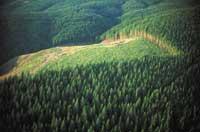
Another problem of soil is the loss of organic matter. Organic matter gives soil erosion resistance and is related to soil fertility. However, agriculture and forestry have a great influence on organic matter. It tends to cultivate a single crop in which it has been observed that organic matter is not sufficiently renewed. In addition, specialization has led to the division of livestock and agriculture, so now the soil is not enriched with the deysections of animals.
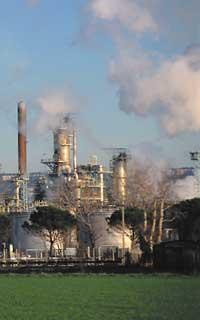
The main component of organic matter is carbon and soil carbon is involved in the whole carbon cycle. According to some studies, the soil accumulates in the form of organic matter two billion tons of carbon per year. Human activities, on the other hand, emit eight billion tons of carbon into the atmosphere, demonstrating the importance of soil carbon to curb the greenhouse effect. Therefore, to increase the organic matter of the soil it is advisable to use suitable agricultural systems such as organic agriculture, conservation agriculture, sustainable pasture, manure, compost, etc.
On the other hand, pollutants accumulate in the soil and are harmful from a certain point on. Sometimes pollution is local, and in many cases mines, industrial areas and landfills are sources of pollution, even after its closure. In the most industrialized places in northern Europe, for example, the damage is evident, but the effects of this pollution are seen throughout the continent. In the Basque Country itself special measures have been necessary for the cleaning of pollution by industrial and mining activities.
At other times, pollution is less local, it spreads more. The toxic gases present in the atmosphere, the chemicals used in agriculture and heavy metals, the substances dragged by ill-treated wastewater... all reach the soil and can overcome their capacity for renewal.
Build and undertake and lose biodiversity
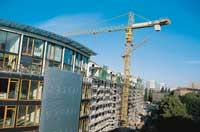
The wide European areas are full of houses and roads. In its construction the soil is sealed, so it cannot perform its functions. For example, you cannot collect and filter rainwater and the organisms that live in it are separated.
The soil, even without being subjected to buildings, is compacted in many places, affecting fertility, accumulation capacity, biological activity and stability. By losing porosity, the soil cannot absorb water from torrential rains, with the consequent risk of flooding and increased erosion.
Soil compaction in wet soils is easier, so it is not very difficult to see in some places of Euskal Herria the land compacted by vehicles and machinery, grazing or mountaineers forests.
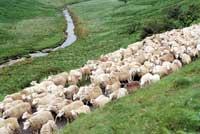
For these reasons soil biodiversity is lost. In addition, biodiversity loss makes soil more vulnerable to erosion and other degradation processes. Research conducted over two years in Austria showed that organic farming contributes to protecting and increasing soil biodiversity. It seems that in organic farming lands there was 94% more beetle than in conventional agriculture, and the number of beetle species was also 16% higher.
In irrigated lands the soil salinizes, losing fertility. Irrigation water always contains salts that evaporate into the soil. In the European Union it is estimated that salinization affects one million hectares, especially in the Mediterranean basin, and is considered the main agent of desertification.
Measures and rules of struggle

Although the processes that threaten the soil have been analyzed, very few data have yet been collected and soil evolution cannot be known. Surveillance systems have not been established and it is impossible to compare data as harmonised methods have not been used in EU countries. Therefore, the report prepared by the European Commission contains the desire and intention to solve these shortcomings. A complete and direct diagnosis of the situation is essential in order to take appropriate measures.
However, some EU rules, as well as some national laws, contribute to soil protection. Environmental, transport, industry, air, water, agriculture and research policies are some of the ones affecting the soil. However, these measures are insufficient and intend to develop concrete rules for soil protection. In addition, to the extent that the problem is international, they will take into account the agreement against desertification of the United Nations. Soil degradation is occurring in many places, directly affecting food security, poverty, water quality and the environment.
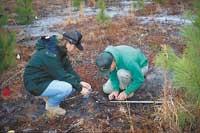
According to the European Commission report, land protection policy will focus on prevention, prudence and anticipation. In addition, special protection of biodiversity and organic matter will be guaranteed as essential elements for the development of soil functions. And surveillance systems will be established, including environmental responsibility. All this with a deadline that the European Commission will publish in June 2004 a report with the technical and legal measures adopted. Therefore, we will have knowledge of what is done.
For the full report of the European Commission, the address is http://europa.eu.int/comm/environment/agriculture/sol_protection.htm
Soil functions Soil plays essential roles for the environment and life. It contains minerals, water, organic matter and a number of chemicals, participating in its transformation processes. The soil releases carbon dioxide, methane and other gases into the atmosphere and groundwater leaks through the soil, the main reservoir of drinking water. In addition, due mainly to organic matter, it has a great capacity for accumulation and cushioning of substances such as water, gases and pollutants. Without soil the risk of dispersion of contaminants that could reach humans more easily would be borne. On the other hand, it is the habitat of many living beings. The variety of organisms they inhabit is enormous: a gram of soil in good condition can contain up to 600 million bacteria from 15,000 to 20,000 different species. Worms, snails and arthropods break down organic matter and bacteria, fungi, protozoa and other small organisms perform the necessary processes to make the soil fertile. The biodiversity of a land is an indicator of the state of this soil. Also, the food that human beings need to feed depends directly on the soil. All plants, whether grown in crops, pastures or forests, receive water and food from the soil and grow in it, that is, the soil serves as support. Human beings have always used this natural resource not only to obtain food, but also to extract peat, sand, clay and other raw materials. And it is the support for all other human activities. Finally, it is part of the landscape and cultural heritage. |
Soil risks in the Basque Country As anywhere else in the world, the soil of the Basque Country is heavily affected by climate, labour activities and economic policy. In general, the main enemies of the soil in Euskal Herria are desertification, erosion and poisoning. Desertification is very notable in southern Euskal Herria and occupies a large area. This is causing soil loss until the appearance of the mother rock, which is clearly seen in the Bardenas, for example. However, surprisingly, the same phenomenon is occurring in the north, and in some fields and forests, including some beech, the consequences of desertification are observed. However, the most important phenomenon in the north is erosion. Forestry and other land movements are causing soil loss and, among other phenomena, landslides are becoming very common places. Another threat from the soil in Euskal Herria is poisoning. In agriculture, for example, nitrification is occurring in areas with excessive fertilizer use. And in industrialized environments, chemical pollution is the most problematic. Although solutions are being put in place, as in the case of lindane, there is still much ground to recover. Finally, we must not forget that the continuous expansion of cities, urbanized areas and transport routes, such as highways, roads and railways, represents a significant loss of soil. However, there are also phenomena that occur throughout Europe. Technical service |






